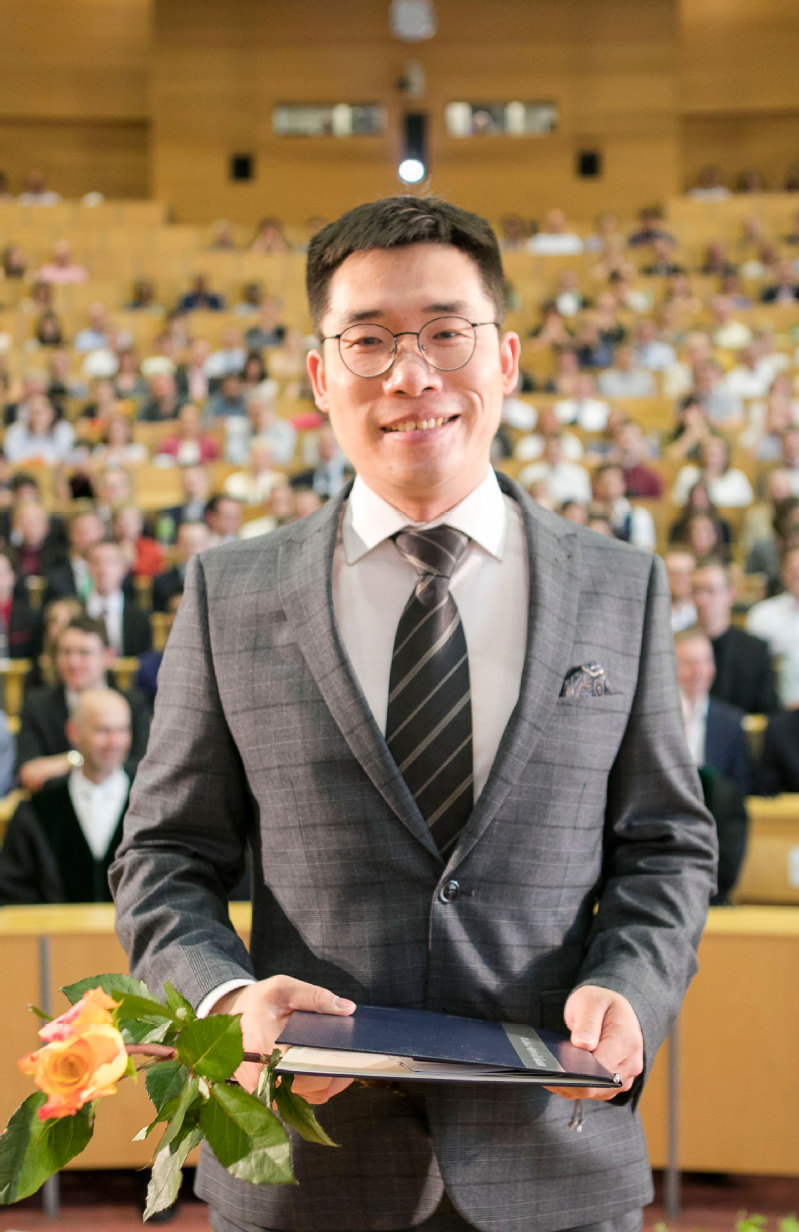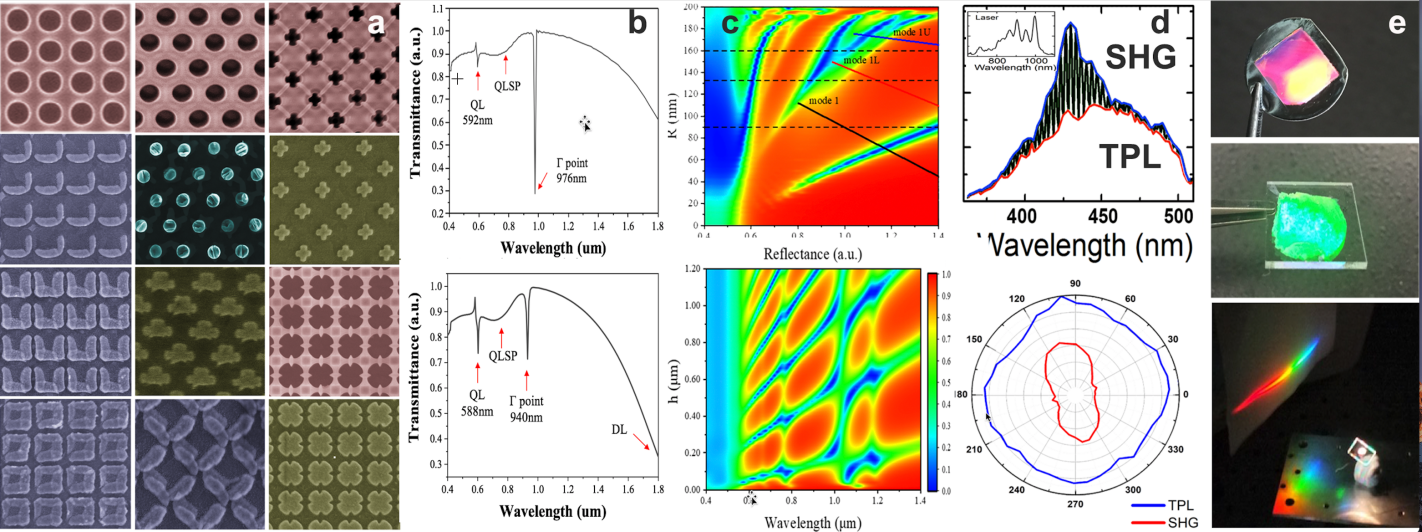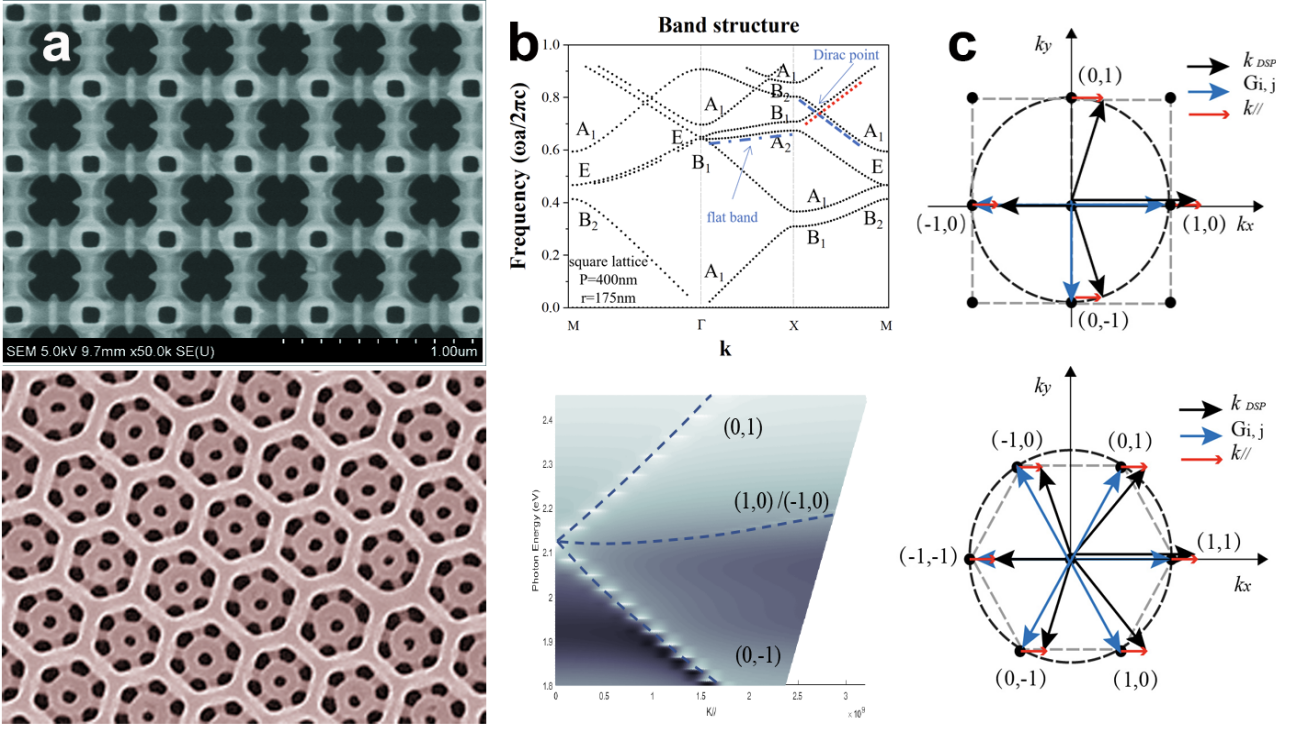
Prof. Dr. Wenxin Wang earned his academic degree of Dr. rer. nat. (cum laude) at the Technische Universität Ilmenau (Germany) in 2018 and became the group leader of Photonic Materials Group (PMG) in the College of Physics and Optoelectronic Engineering as well as the Innovation and Development Base (Qingdao) at the Harbin Engineering University (HEU) in the same year. His main research interests include fabrication of planar and microtubular photonic crystals using artificial alumina membranes, developing plasmonic lattice resonances, and studying band structure of photonic crystals as well as structural color modulated by nanoscale lattice arrangement. So far, he has authored for more than 30 papers, many of which are published in high-impact scientific journals, and received some research prizes and prestigious fundings (5.21 million RMB in total), such as the third prize of the “Rising Stars of Light” in the Light conference of LSA in 2018, HEU group-starting grant in 2018, NSFC grant in 2019, Fundamental Research Funds for the Central Universities in 2019 and 2020. Meanwhile, he has given quite a few invited talks, such as Postdeadline talk at DPG conference, and organized scientific conference (e.g., the CPFN in 2014) as well as several social events in Germany. Furthermore, he has been invited by the Chinese Embassy in Germany as a scholar representative to welcome President Xi and Premier Li in their visit to Germany in 2014. Currently, he serves as the deputy president of Heilongjiang Western Returned Scholars Association (Oversea-educated Scholars Association of Heilongjiang), the mentor of HEU "CHEN GENG" Talent Class, and the advisor of OSA-HEU student chapter as well as SPIE-HEU student chapter.

pmg.hrbeu.edu.cn
Even though photonic devices and technologies have profound influence on human’s society, its capabilities have not been fully exploited. In the broadest sense, nano-scale patterning are the critical promoters that will allow mankind to take full advantage of photonic systems. In order to further utilize the nanopatterns, we must gain better understanding of the light-matter interactions that occur in nano-scale, and develop advanced techniques to construct artifical nanoarrays in large scale for practical applications. The Photonic Materials Group (PMG) takes responsible to efficiently construct complex nanopatterns beyond centimeter scale. The ultra-fast laser source, angle-resolved spectrometry, and numerical simulation are deployed to shed light on their physical properties. The specific researchs in PMG include:
1.Novel photonic properties based on plasmonic lattice resonance over centimeter-scale sample
The presence of standing wave in photonic lattice arrays is due to the constructive interference of coherent photons in nanopattern arrays (a), which delocalize the surface plasmons, suppress the radiative loss/damping, form strong coupling that enhances the near-field optics. Ultrasharp lattice resonance modes can be observed in the index-matching environments (b). These linear behaviors, sometimes followed by strong coupling (c), affact their 2nd order nonlinear optical performances upon irradiation of polarized light (d). In addition, they are good candidates for producing structral color (e).

Figure 1 (a) Photonic crystals; (b) Lattice resonance modes; (c) Strong coupling; (d) The 2nd order optical nonlinearities; (e) Structural color.
2.Band structure modulation based on complex lattice
Because of the periodicity and symmetry of the lattice, the macroscopic optical properties of photonic crystals can be modulated by lattice arrangement, which correlate with their characertistics in the reciprocal space. For instance, embed photonic atoms at high symmetry points (a) can modify the first Brillion zone by lifting or supressing the Dirac point (or Dirac-like point) in hexagonal/honeycomb lattice (or square lattice), or generating flat band structure (b). The morden diffraction theory (c) and group theory are useful tools to investigate the evolution of degenerate states and their symmetrical propertics.

Figure 2 (a) Superlattice with different embedded structures at high symmetry points; (b) Experimental and theoretical dispersions and band structures; (c) Energy-momentum diagram of the diffracted photons.
3.Reversible / gradual deformation 2D hierarchical superlattices and their optical properties
The flexible modulation of Surface Plasmons (SPs) on micro-/nanostructures is an interdisciplinary frontier of materials science and nanophotonics. With the assistance of hierarchically structural alumina membrane (a), it is possible to actively tune SPs based on reversible/ gradual micro-deformation of 2D superlattices using external (optical, electric, thermal) fields (b), which is of great importance for promoting the applications of active response optical devices (c).

Figure 3 (a) Hierarchical alumina membranes; (b) Actively reversible hierarchical photonic crystals; (c) Simulated E-field distributions before and after external stimulation.